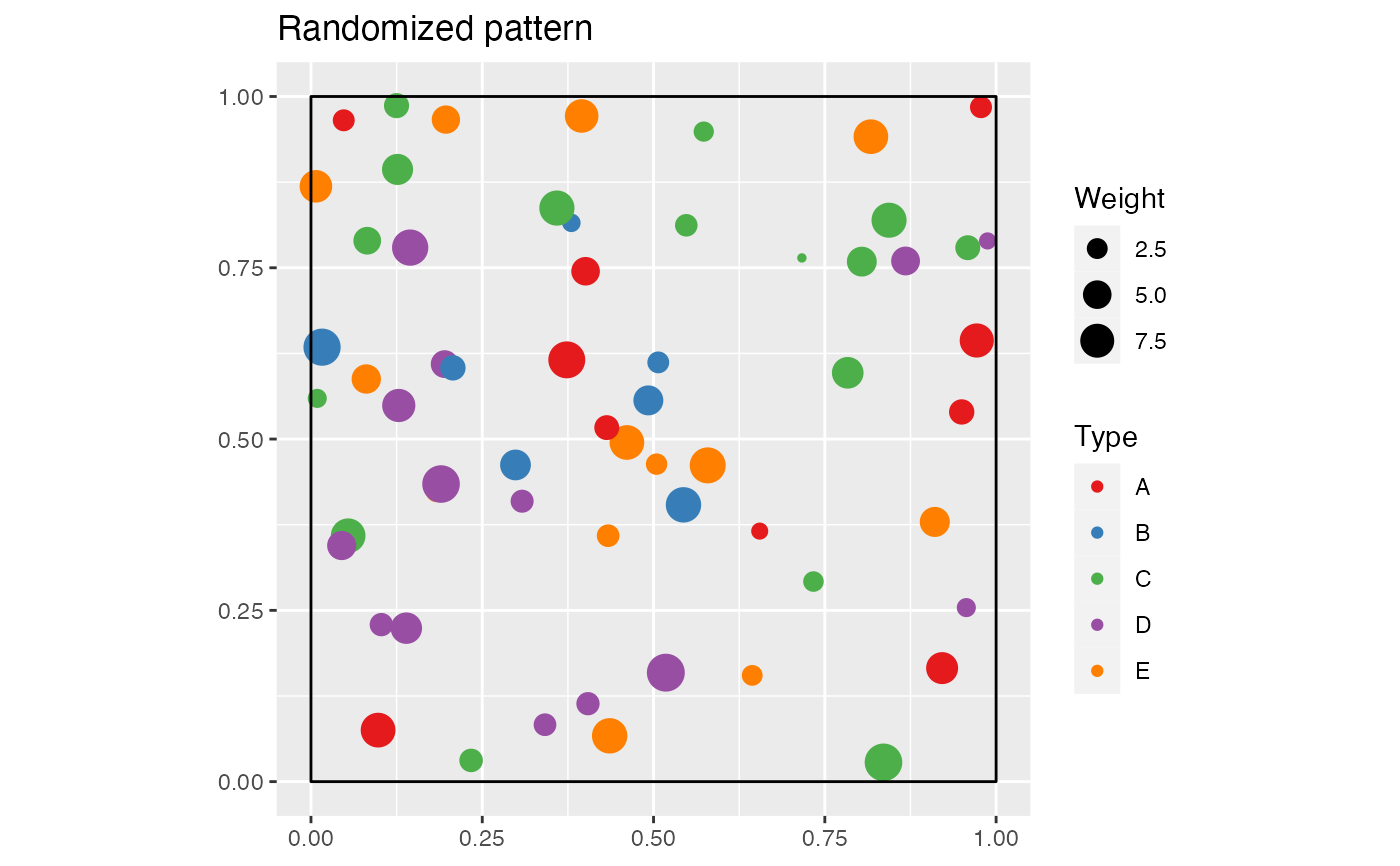
Simulations of a point pattern according to the null hypothesis of random labeling
rRandomLabeling.RdSimulates of a point pattern according to the null hypothesis of random labeling.
Arguments
- X
A weighted, marked, planar point pattern (
wmppp.object).- CheckArguments
Logical; if
TRUE, the function arguments are verified. Should be set toFALSEto save time in simulations for example, when the arguments have been checked elsewhere.
Value
A new weighted, marked, planar point pattern (an object of class wmppp, see wmppp.object).
References
Goreaud, F. et Pelissier, R. (2003). Avoiding misinterpretation of biotic interactions with the intertype K12 fonction: population independence vs random labelling hypotheses. Journal of Vegetation Science 14(5): 681-692.
Examples
# Simulate a point pattern with five types
X <- rpoispp(50)
PointType <- sample(c("A", "B", "C", "D", "E"), X$n, replace=TRUE)
PointWeight <- runif(X$n, min=1, max=10)
marks(X) <- data.frame(PointType, PointWeight)
X <- as.wmppp(X)
autoplot(X, main="Original pattern")
 # Randomize it
Y <- rRandomLabeling(X)
# Types and weights have been redistributed randomly across locations
autoplot(Y, main="Randomized pattern")
# Randomize it
Y <- rRandomLabeling(X)
# Types and weights have been redistributed randomly across locations
autoplot(Y, main="Randomized pattern")
